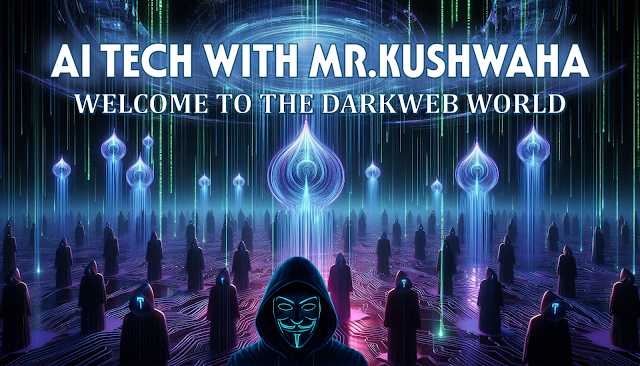How to Learn Hacking Free: Best Sites, AI Tools, and How to Stay Safe from Hackers

Introduction
In today's digital world, ethical hacking is not just a niche—it is a highly demanded skill across industries. Ethical hacking, also known as penetration testing or white-hat hacking, helps in securing systems from cyber-attacks. The good news? You can learn hacking absolutely free from reputed websites and tools. In this comprehensive guide, we will explore the best platforms, AI tools used in hacking, cybersecurity practices, and how you can start today.
free hacking course, ethical hacking sites, AI hacking tools, cybersecurity guide, learn hacking online, free ethical hacking websites, hack protection
📌If you're also interested in Affiliate Marketing, Freelancing, or YouTube Earning Tips, check out our related posts to diversify your online income streams.
🎓 What is Hacking?
Hacking is the process of finding and exploiting vulnerabilities in a system or network to gain unauthorized access. However, not all hacking is illegal.
Types of Hackers:
White Hat Hackers - Ethical hackers who work to protect systems.
Black Hat Hackers - Malicious hackers who breach systems for personal gain.
Gray Hat Hackers - Hackers who work both sides.
Important Note: This guide is strictly for educational and ethical purposes.
💼 Why Learn Hacking?
Improve your cybersecurity awareness
Land jobs in ethical hacking, cybersecurity, or network security
Understand system vulnerabilities
Help secure organizations and individuals from cybercrime
✨ Best Free Websites to Learn Hacking
Here are the top free websites where you can start your ethical hacking journey:
1. Cybrary
Website: https://www.cybrary.it
Offers professional-level free courses in ethical hacking, network security, and more.
2. Hack The Box (HTB)
Website: https://www.hackthebox.com
Interactive platform with hacking labs and challenges for all levels.
3. Try Hack Me
Website: https://www.tryhackme.com
Beginner-friendly interface and rooms to practice real hacking techniques.
4. Over The Wire
Website: https://overthewire.org
Perfect for beginners to learn basics through war games.
5. Hacker101
Website: https://www.hacker101.com
Free web security lessons offered by HackerOne.
6. Code-cademy (Cybersecurity Path)
Website: https://www.codecademy.com
Some courses are free to learn ethical hacking and Python scripting.
7. MIT Open Course Ware
Website: https://ocw.mit.edu
University-level cybersecurity and hacking courses for free.
8. Coursera (Audit Option)
Website: https://www.coursera.org
Audit cybersecurity courses for free from top universities like Stanford, IBM.
9. EDX
Website: https://www.edx.org
Free university-level cybersecurity and ethical hacking courses.
10. Security Tube
Website: https://www.securitytube.net
A huge collection of videos and lectures on ethical hacking.
🤖 AI Tools Used in Hacking (and Prevention)
AI is increasingly involved in both offensive and defensive hacking. Below are tools used:
 Offensive AI Tools (Used by Hackers)
Offensive AI Tools (Used by Hackers)

Deep Exploit - AI-powered penetration testing tool.
Social-Engineer Toolkit (SET) - Uses automation to simulate social engineering attacks.
MalGAN - Generates malware that evades antivirus using GANs.
Ghost Framework - AI-assisted Android exploitation tool.
Recon-ng - Web reconnaissance tool that automates information gathering.
Defensive AI Tools (Used for Security)
Darktrace - AI for threat detection and autonomous response.
Cylance - AI antivirus software to prevent attacks.
CrowdStrike Falcon - Predictive security with machine learning.
Snort - Network intrusion prevention using pattern recognition.
AIShield by Bosch - Detects AI model vulnerabilities and threats.
Note: Most AI tools used in hacking require advanced knowledge and system access. They must be used responsibly within legal boundaries.
🚀 Beginner's Roadmap to Learn Ethical Hacking
Here is a structured plan to go from zero to hacker (ethically):
Step 1: Learn Basic Computer Networking
Understand IP, DNS, HTTP/S, FTP, SSH, Ports
Resource: Cisco Networking Basics https://www.netacad.com
Step 2: Learn Programming Languages
Python: For scripting exploits and automation
HTML, JavaScript: For web hacking
SQL: For SQL injection knowledge
Step 3: Master Operating Systems
Focus on Linux (Kali Linux, Parrot OS)
Try online terminal: https://bellard.org/jslinux
Step 4: Learn Cybersecurity Concepts
Firewalls, IDS/IPS, Encryption, Authentication
Resource: IBM Cybersecurity Analyst Course (Free Audit)
Step 5: Practice Ethical Hacking
Platforms: TryHackMe, HackTheBox
Tools: Nmap, Metasploit, Burp Suite, Wireshark
Step 6: Get Certified (Optional but useful)
CompTIA Security+
CEH (Certified Ethical Hacker)
OSCP (Offensive Security Certified Professional)
🛡️ How to Stay Safe from Hackers
To protect yourself or your organization, apply the following measures:
1. Use Strong Passwords
Use combinations of uppercase, lowercase, numbers, and symbols. Use password managers.
2. Enable Two-Factor Authentication (2FA)
Always turn on 2FA wherever available.
3. Keep Software Updated
Regularly update OS, antivirus, and applications to fix vulnerabilities.
4. Use Firewalls and Antivirus
.png)
5. Avoid Public Wi-Fi for Sensitive Tasks
Use VPN if using public internet to encrypt traffic.
6. Back Up Data Regularly
Use both cloud and offline storage for backups.
7. Educate Yourself and Your Team
Phishing awareness, regular training, and access control reduce risk.
A blog like “Cybersecurity 101: Beginner’s Complete Guide”
✨Popular Hacking Tools to Practice Legally
Wireshark - Packet analysis
Nmap - Network scanning
Metasploit - Exploitation framework
Burp Suite - Web vulnerability scanner
John the Ripper - Password cracking tool
All tools should be used only in a legal, safe lab environment or with explicit permission.
🔒 Legal Disclaimer
This blog is for educational and informational purposes only. Any mention of hacking tools or techniques is to raise awareness about cybersecurity. Using these techniques to access unauthorized systems is illegal and punishable by law. The author does not support or promote illegal hacking.
✨ Conclusion
Learning hacking doesn’t have to be expensive. With the right guidance, platforms, and dedication, anyone can become a skilled ethical hacker. Start by building your fundamentals, explore free platforms, test your skills in labs, and always remember to stay ethical. In the age of AI, cybersecurity is evolving fast—and the demand for ethical hackers has never been higher.
For more related content, check out our blogs on:
Stay connected with the latest in AI, trading, and digital finance!

.png)
.png)










.png)



.png)


